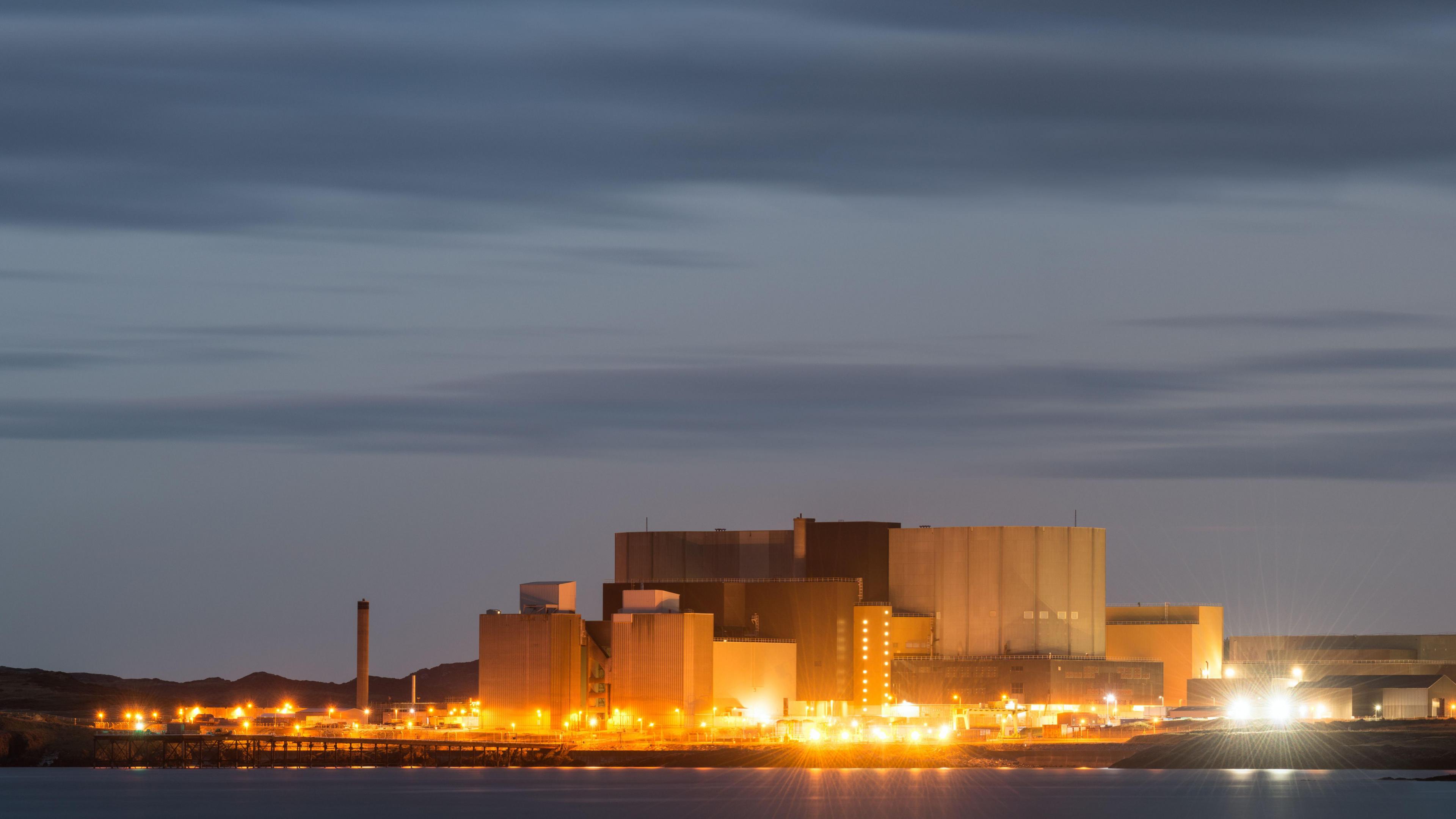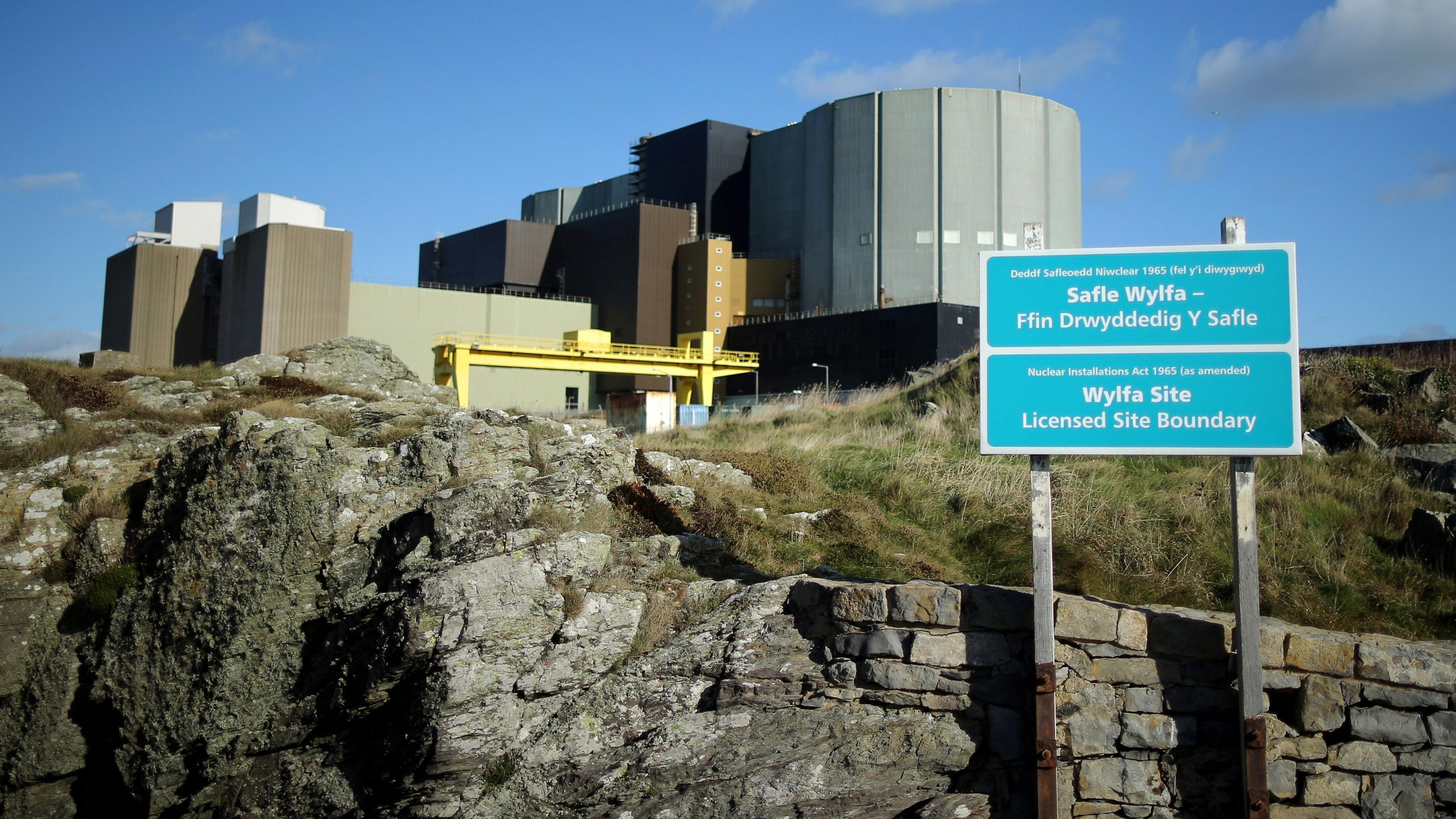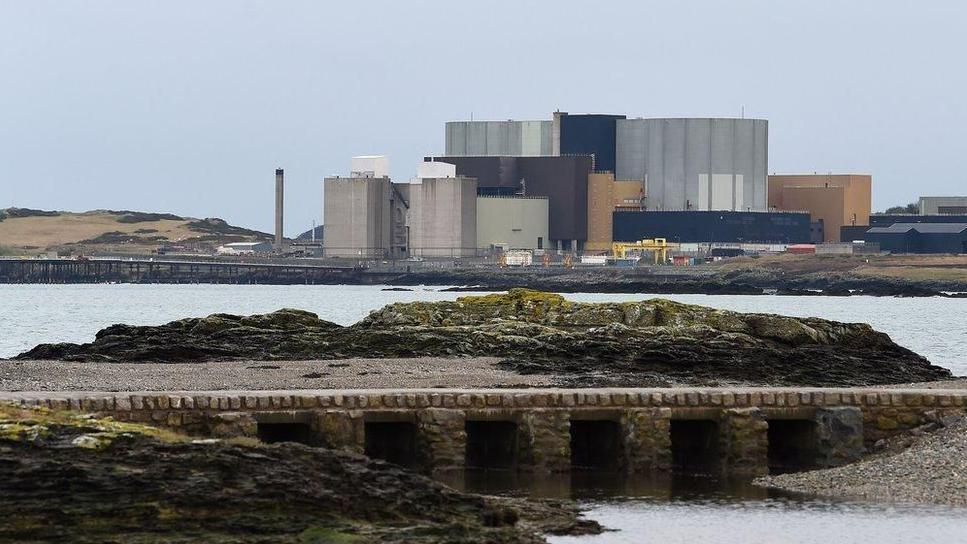Wylfa nuclear plans expected to get go-ahead in days

Previous plans for a new nuclear power plant at Wylfa collapsed in 2021 due to a lack of state funding
- Published
Wylfa on Anglesey is expected to be the site for a new nuclear power station, with the decision to be confirmed on Thursday, BBC Wales has been told.
It is thought that the UK government will give the go-ahead for a small modular reactor (SMR).
Ministers have been weighing up whether to choose Anglesey or Oldbury, in Gloucestershire, after signing a £2.5bn partnership with Rolls Royce to build it earlier this year.
It is hoped the plant will provide up to 900 full-time jobs and several thousand more during construction. The Department for Energy Security and Net Zero has been asked to comment.
What is Wylfa? The long and complex story explained
- Published22 May 2024
What are small nuclear reactors and why does the UK want to build them?
- Published13 November
It is not known how many small reactors will be built at Wylfa, but the site is believed to be capable of accommodating more than one.
Previously, the UK government department has promised a "golden age of nuclear" which would "protect family finances, boost energy security and create thousands of jobs".
SMRs are manufactured in a factory in modules before being assembled on-site and can power around a million homes.
There have been calls, including from the US ambassador to the UK, for Wylfa to house a larger gigawatt nuclear power plant, which could power three million homes.

What is Wylfa?
Wylfa is an old nuclear power station off the coast of Anglesey, in north west Wales.
It was built in the 1960s and first began generating electricity in 1971, employing thousands of workers.
In 2015, Wylfa's last reactor was closed down and it began the long process of being decommissioned, ending 44 years of operations at the site.
Why did Wylfa power station close?
Most nuclear power plants have operating lifespans of 30-40 years, according to the International Atomic Energy Agency.
When Wylfa closed, it was Britain's oldest.
It was owned and operated by Magnox, which had stopped producing the fuel required to run the plant in 2008, according to the UK government.
Wylfa's first reactor shut down in 2012 before the site closed completely in 2015.

Previous plans for a new nuclear power plant at Wylfa collapsed in 2021 due to a lack of state funding
The Welsh government refused to comment but referred to a previous statement issued on Monday, which said: "Nuclear energy is part of our plan to move away from fossil fuels, using both large-scale and small modular reactors."
The statement continued: "Wylfa is particularly well placed to attract investment in new nuclear plants because of its nuclear legacy and highly skilled local workforce.
"We continue to work with the UK government to ensure Wales' potential in this sector is fully realised."
Janet Finch-Saunders, Welsh Conservative shadow environment secretary, said the decision was a "fantastic opportunity for Anglesey", and added that it came following the "tireless efforts" of former Ynys Mon MP Virginia Crosbie and the previous UK Conservative government.
Llinos Medi, the Plaid Cymru MP who took Crosbie's seat in last year's general election, said her constituents will "rightly treat this story with caution until we see concrete action".
She said: "We await further details to see how this announcement will secure high-quality, long-term jobs, and ensure local supply chains benefit from any development."
Rhun ap Iorwerth, Plaid Cymru leader, said the potential announcement would be a "significant development" but added it is "just the start of the process".

Rhian Synnot said any new jobs will need to go to local people
Resident Clay Theakston said: "I think it's a fantastic thing, I think the island has been crying out for jobs and extra work for quite a long time."
Rhian Synnot, who runs the Cain shop in Llangefni, said: "I think it's a good thing, it will bring work for the young people on the island, so long as work goes to local people.
"Most of the factories have closed, so we need jobs here."
Gordon Gibson, 60, who lives in Llangefni, said: "I'm all for it and it's more reliable and cleaner than a lot of the other power stations, and it doesn't take over land like the solar panels will."
Nuclear industry will welcome decision
Analysis by Steffan Messenger, BBC Wales environment correspondent
Wylfa had been touted as being "top of the list" of sites being put forward by Rolls Royce to host the first of its SMRs.
At the COP26 climate summit four years ago, the man in charge of the company's plans at the time Tom Samson told BBC Wales it was "the ideal location to host a large number" of them.
The site's size and "readiness" - as well as a "hugely supportive, strong and welcoming community" were a big attraction, Mr Samson said.
The decision - if confirmed on Thursday - will be warmly welcomed by the nuclear industry, though there are some who say privately they would have preferred to see the go-ahead for a more traditional large-scale plant.
Opponents point to the fact that a long-term storage facility for the UK's nuclear waste is yet to be agreed upon and say investment in renewable energy schemes - wind, wave and tidal - is what Anglesey needs.
More top stories
- Published12 November

- Published11 November

- Published12 November
